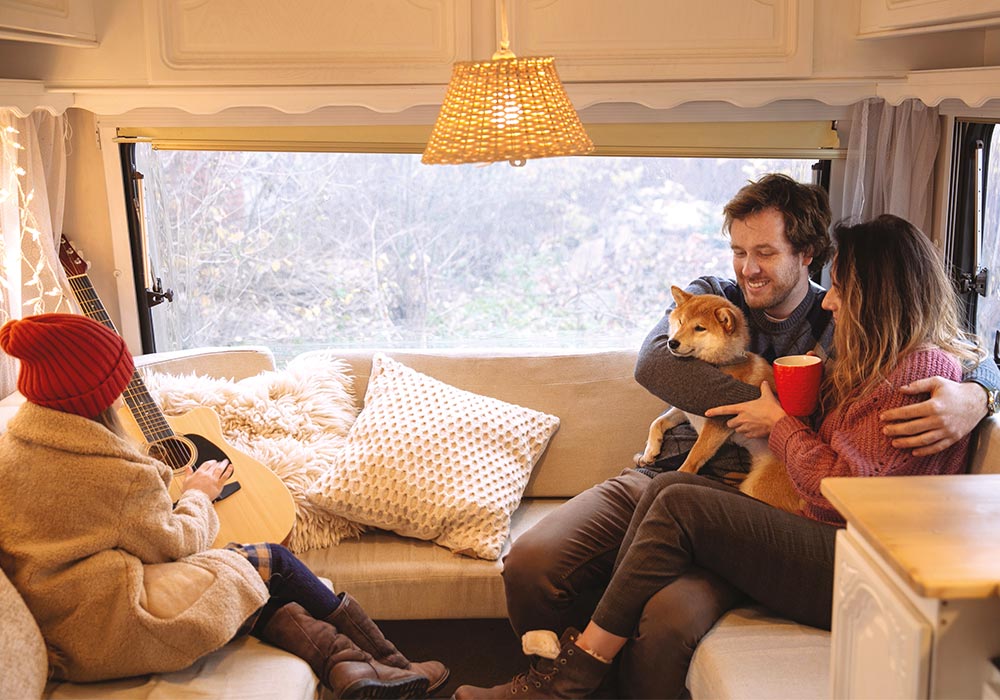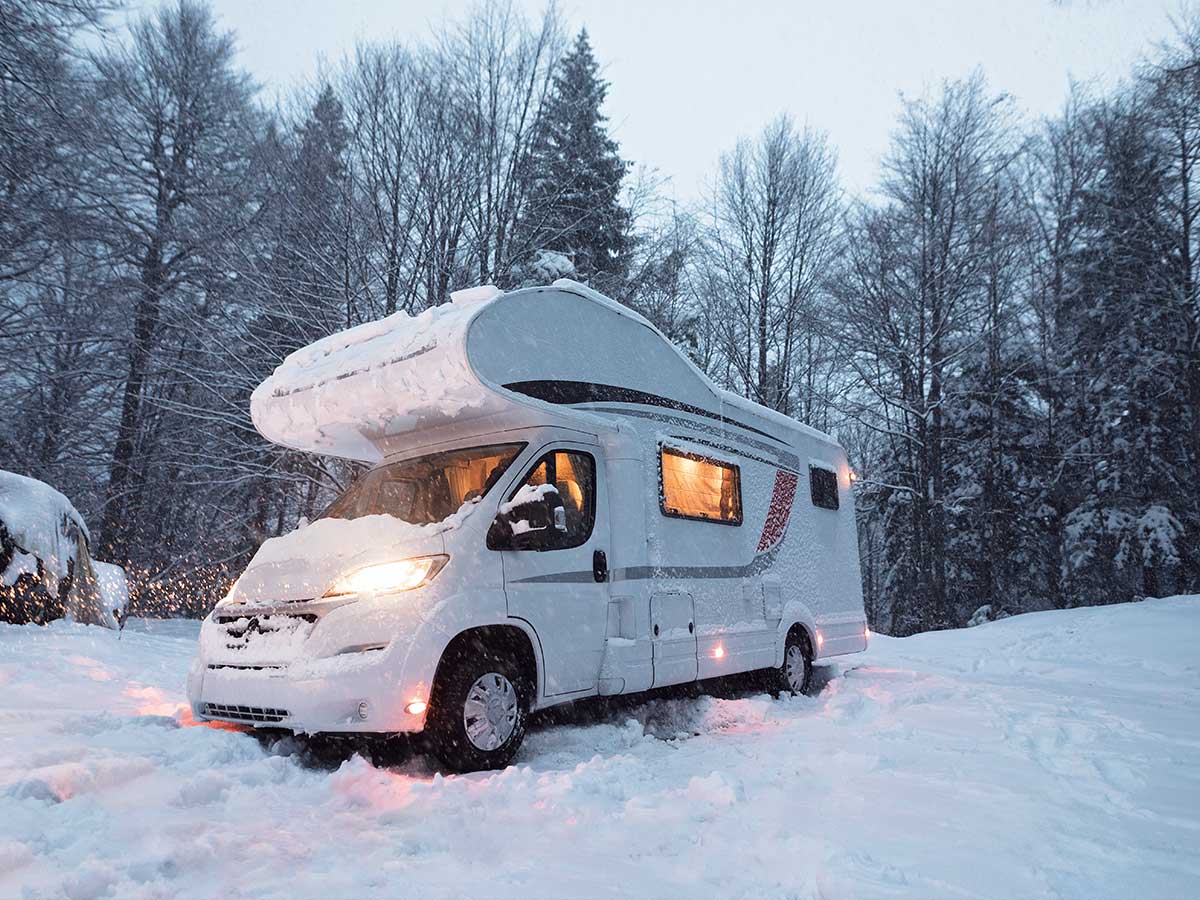As the cooler months usher in, Lisa Jansen takes a look at the different heating systems for RVs and their pros and cons
With the days getting shorter and temperatures dropping, heaters nationwide are being woken up from their summer slumber, including those in RVs. If your mobile home doesn’t have a (good) heater yet, you might be considering installing one to keep you cosy in winter.
In New Zealand, five types of heating are commonly used in RVs: diesel heaters, gas heaters, wood fireplaces, wet central heating (Alde), and electric heaters.
It’s important to note that different models and styles are available in each category, which can make a big difference. That’s maybe why, for each option, you will find people who love it and others who hate it. Therefore, once you’ve identified the heating type that might be right for you, it’s a good idea to research the different models and manufacturers to find the one that suits you best. In this article, we outline the high-level pros and cons of each category.
Safety first
Before we get into the nitty-gritty details, a word of caution: heating should be chosen and installed with safety front of mind. The wrong type of heater or installation can have serious consequences, including fires and harmful fumes in the van. This is one of the reasons outdoor gas heaters, like you might use on a patio at home, are not recommended for RVs. They are simply not safe. Whichever heater you choose, ensure it’s a safe option and get it installed by a certified expert.
Diesel-blown heaters

Diesel-blown heaters are a popular choice for those seeking an efficient and reliable heating solution that can run off 12V. As the name suggests, they use diesel fuel to generate warmth and distribute it throughout the living space via fans. Most have a thermostat, making it easy to control the temperature.
Diesel heaters are known for their high efficiency, providing a quick and consistent heat output. While some power is required to run the heater, this is usually minimal and should be no challenge for most 12V systems. In addition, diesel is widely available and often more cost-effective than other fuel options. If your vehicle runs on diesel, you might be able to run your heater off the main diesel tank, eliminating the need for a separate tank.
The main downsides of diesel heaters are that they can be noisy (including for your neighbours, which might annoy them) and that the heat isn’t always distributed evenly throughout the space due to the hot air being only released in certain places (smaller RVs often only have one vent). In addition, diesel heaters often have a rhythmic click from the pick-up pump, which some might find annoying. Diesel heaters from well-known brands can be pricey. However, cheaper options from China are now available and have a surprisingly good reputation in RV circles. It can be tricky, though, to find a professional who will install them, so that’s worth considering before buying.
Gas-blown heaters
Gas-blown heaters are similar to diesel heaters, with the main difference being that they run on gas instead of diesel. This can be a crucial advantage for those who do not have a diesel tank installed but already use gas for cooking. However, gas is often more expensive than diesel, and in the long run, installing a diesel tank and heater might well turn out to be cheaper. Another advantage of gas heaters is that many can also run off 230V, which is great for those who often stay on campgrounds.
Like diesel heaters, gas heaters can run off most 12V systems and warm up a small space quickly. Another advantage of both gas and diesel heaters is that they can be used as fans to circulate air without heating. However, they also share the same downsides in terms of being potentially noisy and not distributing heat evenly. In addition, gas heaters pose a potential risk of carbon monoxide emissions, emphasising the importance of proper ventilation and carbon monoxide detectors to mitigate safety risks.
Furthermore, some RVers report increased condensation with gas heaters compared to diesel. While this should technically not be the case with correctly installed and externally vented gas heaters, there are enough stories to consider that there might be something to it.
It’s also worth pointing out that finding gas refill stations can be tricky in more remote parts of New Zealand. This is less of an issue for those with standard 9kg gas bottles that can be swapped in many places. However, smaller RVs often have smaller gas bottles that must be refilled.
Wood fireplaces
Another heating option that has many loyal fans, especially among the house bus community, is a wood fireplace. They add a touch of charm and cosiness to mobile homes and provide warmth and an inviting atmosphere. Another bonus is that they do not require electricity, making them an attractive option for those with minimal or no power systems.
The main downsides of wood fireplaces are the space requirements (especially when considering you also need to store wood), that you need to keep adding wood to keep them running, and the fact that it’s much harder to control the temperatures due to the absence of a thermostat. In addition, they tend to weigh more than other heating options. While a fireplace is undoubtedly cosy, the idea of having to get up in the cold in the morning to get a fire going (rather than flipping the on switch of the gas or diesel heater) is probably one of the main reasons fireplaces aren’t more common in modern motorhomes and caravans.
Wet central heating (Alde)

Wet central heating systems, such as those offered by Alde, use water and antifreeze circulating through pipes and radiators to provide warmth. The Alde system sucks in cool air from the floor level and heats it, so it rises. As the air cools, it sinks and is drawn into the system to be heated again, which creates circulation.
As a result, Alde systems provide even and efficient heating, particularly in low temperatures. That’s why it’s now often the preferred choice for those who travel year-round.
Many wet central heating systems come with programmable controls, allowing users to set desired temperatures and schedules, similar to a central heating system in a house.
Compared to diesel and gas, wet central heating systems’ biggest perks are a more even heat distribution and quieter operation. Like many gas heaters, Alde systems can run on gas and electricity. In addition, these systems usually also provide hot water for showers and doing the dishes, removing the need for a separate hot water system.
However, there are downsides. For starters, wet central heating systems are generally more expensive than other heating options. It’s also essentially impossible to retrofit them, so if you’re looking to add a heater to your existing RV, this is unlikely to be an option. In addition, they often take a bit longer to warm up your RV compared to diesel or gas heaters, and regular maintenance is essential to ensure the proper functioning of the system, which may add to ongoing costs. Finally, while efficient, wet central heating systems may consume more energy and fuel (when running on gas) than the alternatives.
Mains electric heaters
Mains electric heaters will only work when connected to power on a campground or via a generator, or for those with massive battery and solar capacity. However, for those who are happy to stay on campgrounds during winter and cold snaps, this is an excellent, affordable option. Simply buy any suitable electric heater from a mainstream store, plug it in, and wait for it to heat up.
Which option is best?
There’s no one-size-fits-all answer to that question. It comes down to individual preferences and use cases. Here are some factors you might want to consider:
- When and where do you travel, and what temperatures will you likely encounter?
- How do you like to travel? Do you need an off-grid system? Will you stay on campgrounds a lot?
- How much space is available for a heating system in your RV?
- What is the availability of the different fuel sources in the areas where you travel?
- Would the noise of an air-blown heater likely bother you?
- Does your insurance restrict any option (some might not insure wood fireplaces, for example)?
Insulation is key
We wouldn’t do the topic of heating justice without a word about insulation. How well your RV is insulated will make a massive difference in terms of keeping warm and the energy needed to do so. Therefore, if you plan to travel regularly in the colder months, pay special attention to the insulation rating when choosing your home on wheels. Make sure you also consider the windows. If keeping warm is important, double-glazed is the way to go.
In conclusion, choosing the right heating option for your motorhome or caravan involves weighing the pros and cons of each system and considering your specific needs and preferences. However, regardless of your choice, a well-functioning heating system will undoubtedly enhance your winter camping experience, keeping you warm and comfortable on your travels.






